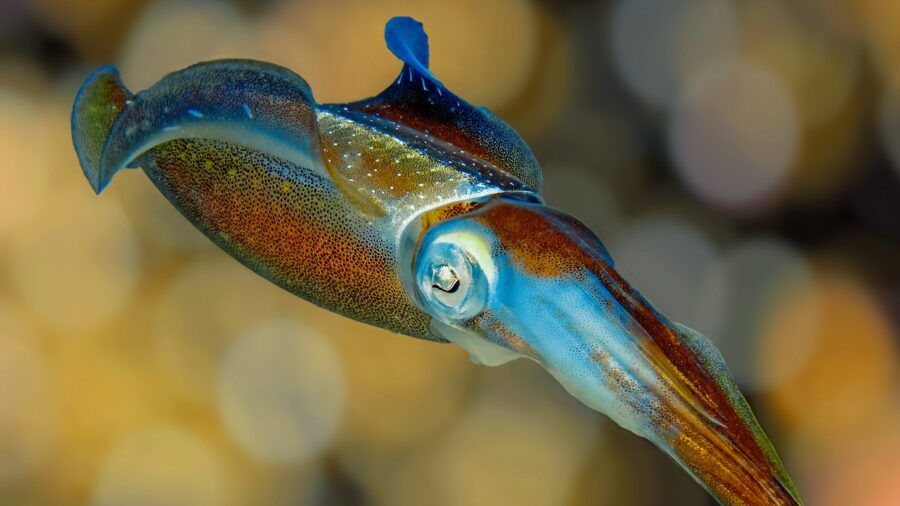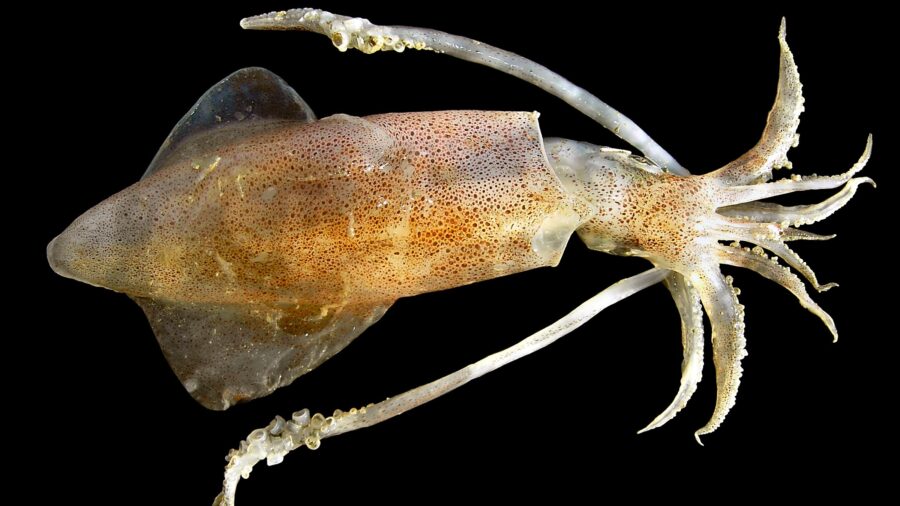Scientists Are Giving Humans The Camouflage Ability Of Squids
Squids' unique camouflage abilities have been replicated using a technique called cell clumping.

Millions of people from across the globe tuned in to the 2021 Netflix thriller series Squid Game, but now it seems scientists have been playing a squid game all their own. According to a write-up in Futurism, American researchers have created a method of producing squid-like camouflage cells in human beings, allowing near full transparency. This cephalopod camouflage could be highly useful for studying how squid cells function, given that they cannot be replicated in a lab environment for easy testing, while also providing humanity a path to developing invisibility technology.
Squids and octopuses have the uncanny ability to disguise themselves from danger by utilizing pigment-shifting techniques within their skin cells to avoid predators. Many online videos of the oceanic creatures have gone viral for displaying the incredible camouflage cells in action. Due to the nature of pigment-shifting skin cells found within squids and octopuses, scientists have tried and failed for years to replicate the technology under research settings to no avail.
This is, until recently, when Alon Gorodetsky and his team presented their human camouflage cells to the American Chemical Society, citing the tunable transparency technology as an alternative way to study the pigmentation alteration process. In an explanation that sounds as plausible as Iron Man’s nanotech suit in Avengers: Endgame, Gorodetsky detailed his team’s findings which allowed them to create mammalian cells which refract light through clumping, allowing the skin to become opaque. Focusing on skin cells that facilitate coloration, called leucophores, scientists were able to crack the pigmentation code using proteins in the skin cells called reflectins.

This scientific discovery is the latest in a long string of incredible sci-fi tech brought to life, following recent reports of Terminator-style robots that can liquify and solidify at a moment’s notice. The key to unlocking the squid-like camouflage cells was hidden in ordinary salt, which scientists were able to use to clump reflectins into larger nanoparticles. This process allowed cell cultures to mimic squid skin cells, allowing labs to dissect the structures more easily.
Gorodetsky’s team then learned that they could tweak the cell clumping and, therefore the opacity of the cells by using more or less salt, leading to the ability to essentially turn invisible at will. The camouflage cell capabilities have already led to a host of new discoveries, allowing the illusive squids to be studied significantly easier without their pesky need to survive in water. Scientists hope that we could see other squid-based technologies enter our use in the near future, such as liquid windows, allowing us to reduce our carbon footprint through home heating needs.
While it seems unlikely at this time that the tech could be used to create fully invisible humans like that of Chevy Chase‘s Invisible Man, the camouflage cell technology creates an obvious advantage for the continued innovation of scientific concepts. As science continues to push unbelievable concepts like this further and further, humanity can continue to benefit in several unforeseen capacities, truly demonstrating the necessity for the continued funding of science and research across the globe.













